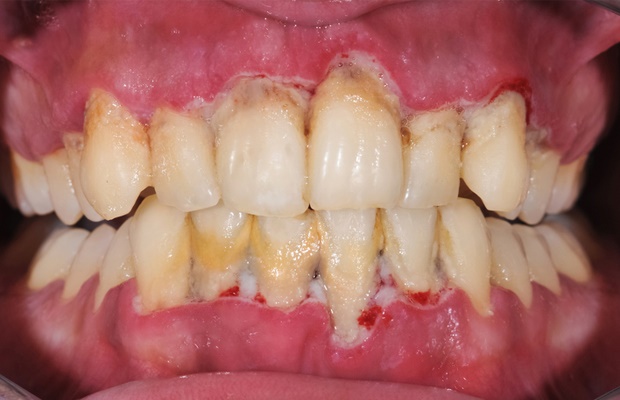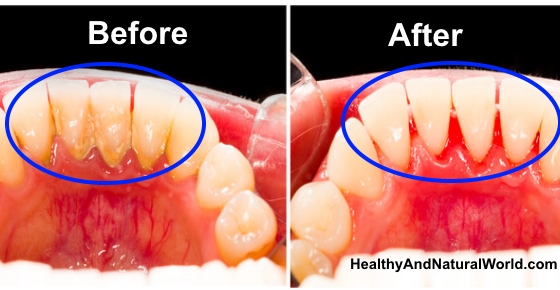
This is why you build up tartar far more quickly at these sites compared to other area in the mouth! Kitchener Dentist Files: How can you minimize tartar buildup? To minimize tartar buildup, plaque control is key! So, that pool of saliva under your tongue is constantly bathing plaque around the gum lines of your lower front teeth. Well, you have lots of salivary output ducts under your tongue and the calcium and phosphate that mineralizes tartar comes from saliva. People can build really thick block of tartar on their lower front teeth but very little elsewhere in the mouth. Kitchener Dentist Files: Why does tartar build up heavily on bottom front teeth?
#Severe calculus buildup in mouth professional#
When you have a professional dental cleaning at your Dentist's office, the Dental Hygienist uses tools designed to remove that tartar. While you can brush plaque off of your teeth, you cannot do the same with tartar. This tartar also contains bacteria which can fuel gum inflammation. Calcium and phosphate in your saliva then soaks into plaque and hardens it. Plaque is made up for dissolved food residue.

Tartar is simply calcified or hardened plaque. Kitchener Dentist Files: Tartar and its Main Ingredients So, first, let's discuss what tartar is and its composition.
#Severe calculus buildup in mouth how to#
As a Kitchener Dentist, I get a lot of questions about how to best control tartar. Tartar drives patients nuts because it makes their teeth feel rough and it can cause inflammation and bleeding gums. Book an appointment at your local Gentle Dental today."Why do I get so much tartar on my bottom teeth?". Our dental team is compassionate, and our main goal is to provide you a comfortable, caring dental experience.

Our doctors and dental specialists provide a wide range of dental services at our 40+ multi-specialty dental offices across Massachusetts and New Hampshire. In addition, avoiding habits such as smoking can help lower your risk of plaque and tartar buildup. Fluoride and antibacterial mouth rinses are also a great addition to add to your dental routine. An electric toothbrush may be recommended by your dentist to help effectively remove dental plaque. Be sure you are visiting your dentist regularly for check-ups and cleanings, typically every 6 months or more frequently depending on your specific oral conditions and the recommendations of your dental professional. Brush all of the surfaces of your teeth at least twice a day for two minutes each time, and floss daily to help remove plaque in-between teeth. It’s important to maintain good oral hygiene to prevent plaque and tartar buildup. Bad Breath: Tartar buildup can contribute to strong oral odors.If not managed, gingivitis can progress into a more severe form of gum disease known as periodontal disease. Signs of gingivitis can include swollen, red, tender and bleeding gums. Gingivitis: Accumulation of plaque and tartar can lead to gum inflammation, which can cause a mild form of gum disease known as gingivitis.Cavities: Oral bacteria feeding on the sugars we consume leads to the production of acids that contribute to tooth decay and enamel erosion.Tartar can cause harm to your teeth and gums by increasing your risk for developing the following: The combination of saliva, food particles, and bacteria stick to all of the surfaces of teeth and lead to the formation of dental tartar if not removed properly.

When we consume foods and beverages, particularly those high in sugar, oral bacteria feed on the sugars allowing them to grow and form dental plaque. The tablet will reveal areas with remaining plaque, which will become temporarily stained by the colored tablet. At home, you can check whether or not you are removing dental plaque properly by using plaque disclosing tablets, which can be purchased over-the-counter at many drug stores. During your regular dental check-up and cleaning, your dental professional will detect and remove tartar. It can be relatively easy to spot tartar buildup on tooth surfaces, as it presents commonly as a yellow or brown stain. How to know if there is a tartar buildup?


 0 kommentar(er)
0 kommentar(er)
